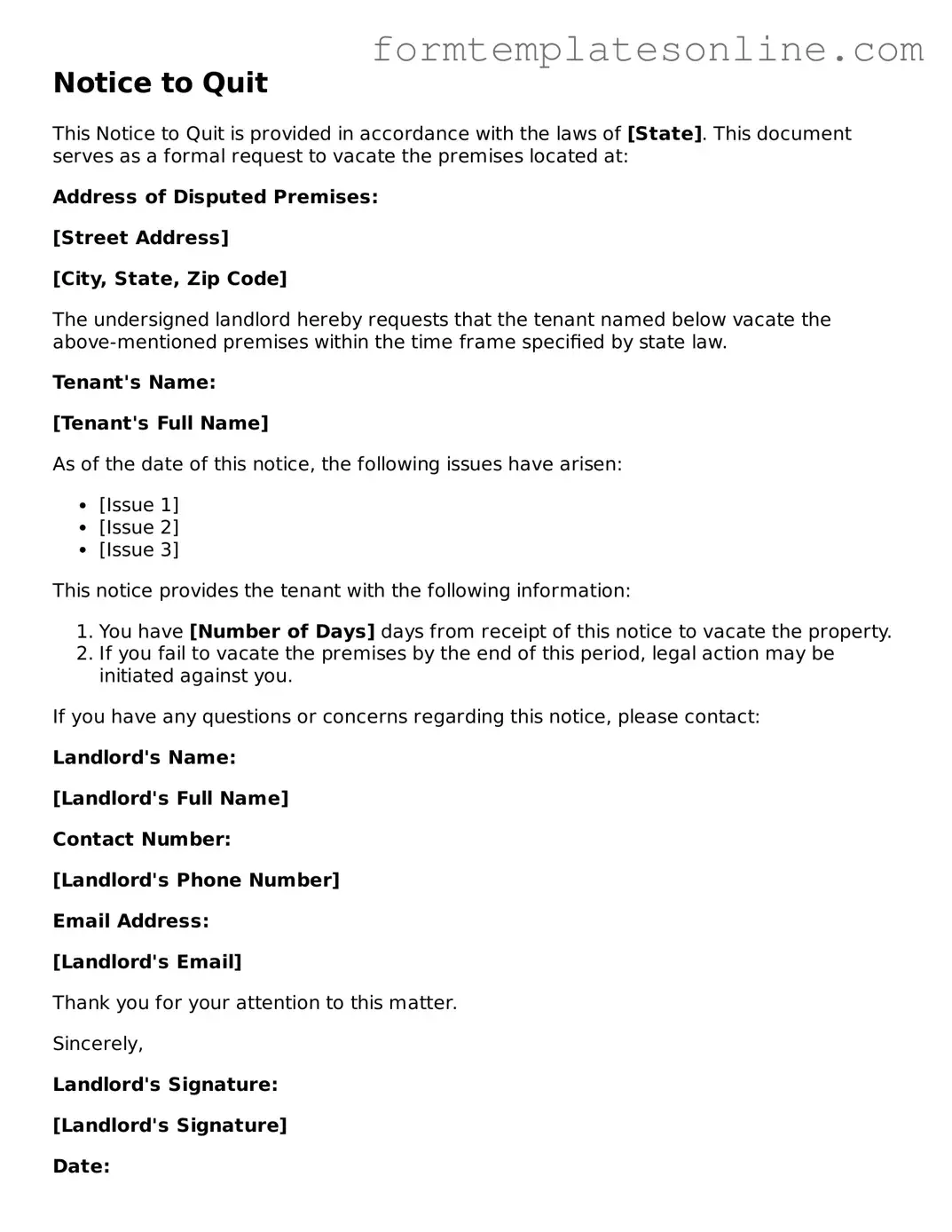What is a Notice to Quit form?
A Notice to Quit form is a legal document used by landlords to inform tenants that they must vacate the rental property. This notice typically outlines the reason for the eviction, such as non-payment of rent or lease violations, and provides a specific timeframe within which the tenant must leave. It serves as an initial step in the eviction process, giving tenants a chance to resolve the issue or prepare for relocation.
How much notice must be given in a Notice to Quit?
The amount of notice required can vary depending on state laws and the reason for the eviction. In many states, landlords must provide a notice period of 30 days for general lease violations or non-payment of rent. However, some situations may require shorter notice periods, such as a 3-day notice for serious violations. It’s important to check local regulations to ensure compliance.
Can a tenant contest a Notice to Quit?
Yes, tenants have the right to contest a Notice to Quit. If a tenant believes the notice was issued unfairly or that they have resolved the issue (like paying overdue rent), they can communicate with the landlord to discuss the situation. If an agreement cannot be reached, the tenant may choose to respond through legal channels, which could include filing a dispute in court.
What happens after a Notice to Quit is issued?
After a Notice to Quit is issued, the tenant has the specified time to vacate the property. If the tenant does not leave by the deadline, the landlord may proceed with eviction proceedings. This often involves filing an eviction lawsuit in court. The court will then determine whether the eviction is justified and can issue an order for the tenant to vacate if it is.
Is a Notice to Quit the same as an eviction notice?
No, a Notice to Quit is not the same as an eviction notice, although they are related. The Notice to Quit is the first step in the eviction process, serving as a formal warning to the tenant. An eviction notice typically follows if the tenant does not comply with the Notice to Quit. The eviction notice usually comes after legal proceedings have been initiated and outlines the court's decision regarding the eviction.
